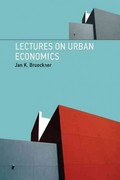Question
Consider the following used-car market. There are two types of used cars: lemons, worth $2000 to buyers and $1800 to sellers; and cream puffs, worth
Consider the following used-car market. There are two types of used cars: lemons, worth $2000 to buyers and $1800 to sellers; and cream puffs, worth $3000 to buyers and $2800 to sellers. Suppose that in the population of used cars three-quarters of the cars are cream puffs, and that buyers learn nothing about a car's quality by driving or inspecting it. All parties are risk neutral. (a) Suppose that there is enough competition among buyers so that equilibrium prices reflect the buyers' expected value of a car. What is the equilibrium in this market? (b) Now suppose that the sellers of used cars can, if they choose, voluntarily send a signal about the value of their car: they can offer a limited warranty. For the owner of a cream puff, warranties cost $60 per month in expected value, for warranties up to 12 months. Warranties on cream puffs are worth $50 per month to buyers. But for lemons, warranties are worth $100 per month to buyers and cost sellers $200 for the first month, and $300 for every additional month the warranty runs. Find a separating equilibrium in this market, i.e., an equilibrium in which signals separate the two types of cars.
Step by Step Solution
There are 3 Steps involved in it
Step: 1

Get Instant Access to Expert-Tailored Solutions
See step-by-step solutions with expert insights and AI powered tools for academic success
Step: 2

Step: 3

Ace Your Homework with AI
Get the answers you need in no time with our AI-driven, step-by-step assistance
Get Started


